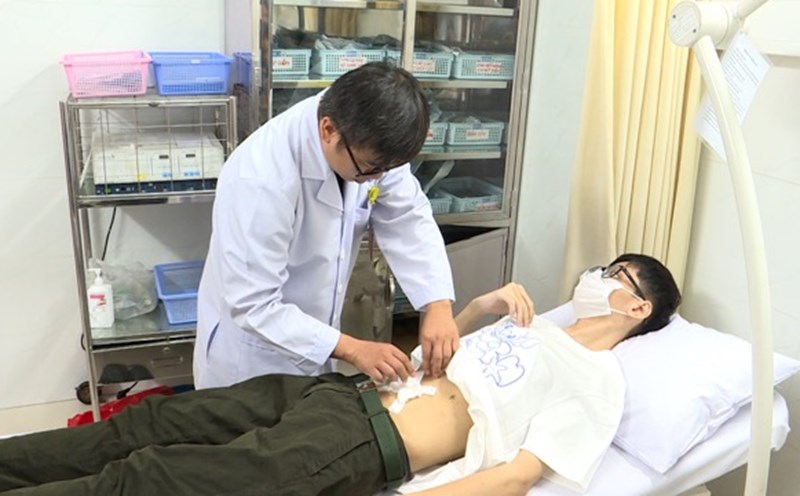On June 20, Gia Dinh General Hospital announced that the unit successfully provided emergency care to male patient M.T (64 years old, Thai nationality, veterinarian) with critical vesical prolapse due to a punctured gallbladder.
Before coming to the hospital, Mr. T had a stomachache for 4 consecutive days but did not go to the doctor. The patient was admitted to the hospital with severe pain and bloating, high fever and signs of impaired consciousness.
Doctors noted that the condition of widespread abdominal infections, combined with severe electrolyte disorders and hyperglycemia, had not been treated. In addition to a history of high blood pressure, Mr. T was also diagnosed with type 2 diabetes that had never been diagnosed.
Through examination and imaging tests, the doctors discovered that the patient's gallbladder was unusually thick, with stones, thick walls and pus accumulating around the gallbladder and spreading into the abdomen. This is a typical sign of necrotizing gallbladder inflammation with gallbladder perforation causing peritoneal inflammation - a dangerous condition, if not intervened promptly, it can lead to septic shock and death.
The patient was given an emergency consultation and needed early surgical intervention, but needed to control severe accompanying disorders including hyperglycemia and severe electrolyte disorders.
In addition, gallbladder is almost completely necrotic and sticks to surrounding organs, making it difficult to peel and stop bleeding. Due to unstable blood flow, doctors are forced to reduce the pressure of pumping abdominal evaporation to lower than normal to avoid reducing circulation.
After nearly 3 hours, the surgery was successfully performed using endoscopy, helping to limit invasion and shorten recovery time. After 2 days, the patient's condition improved significantly and he was discharged after 5 days of treatment.
According to Dr. Doan Hoang Chau - Gia Dinh General Hospital, according to medical research around the world, the mortality rate from post-garment peritoneal peritoneal inflammation ranges from 9.5 - 16%, which can be up to 30% in severe necrotizing cases. Patient T is in the high-risk group because he was admitted to the hospital late and had many accompanying disorders.
In the treatment of acute gallbladder diseases, especially necrotizing gallbladder inflammation, the decisive factor is correct diagnosis, timely intervention and good control of the entire condition. Endoscopic surgery is still the optimal choice if performed, helping patients recover quickly and have few complications.
Dr. Chau recommends that people need to have regular health check-ups, especially if they are at high risk such as women over the age of 40, people who are overweight, obese, have underlying diseases such as diabetes, high blood pressure or have a history of blood lipid disorders.
Beware of symptoms that may be early signs of gallbladder disease such as dull or severe pain in the right lower ribs, fever, nausea or vomiting, mild jaundice.
When there are the above signs, it is necessary to go to a medical facility early for timely diagnosis and treatment, to avoid the disease from getting worse, leading to gallbladder perforation, peritoneal inflammation, and septic shock.
People also need to maintain a diet low in fat, rich in fiber, drink enough water and exercise regularly to help reduce the risk of gallstones.











